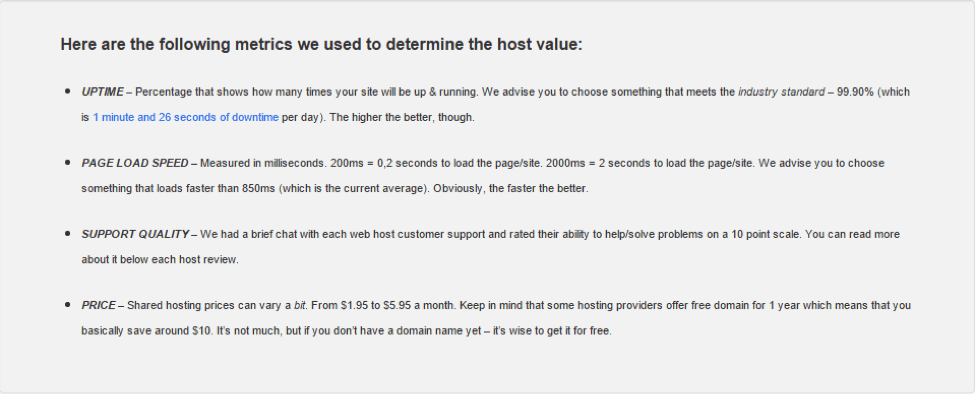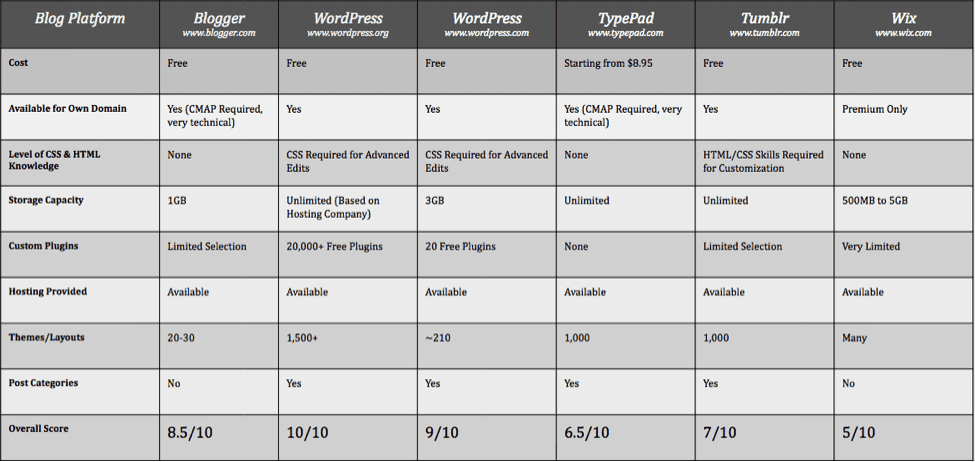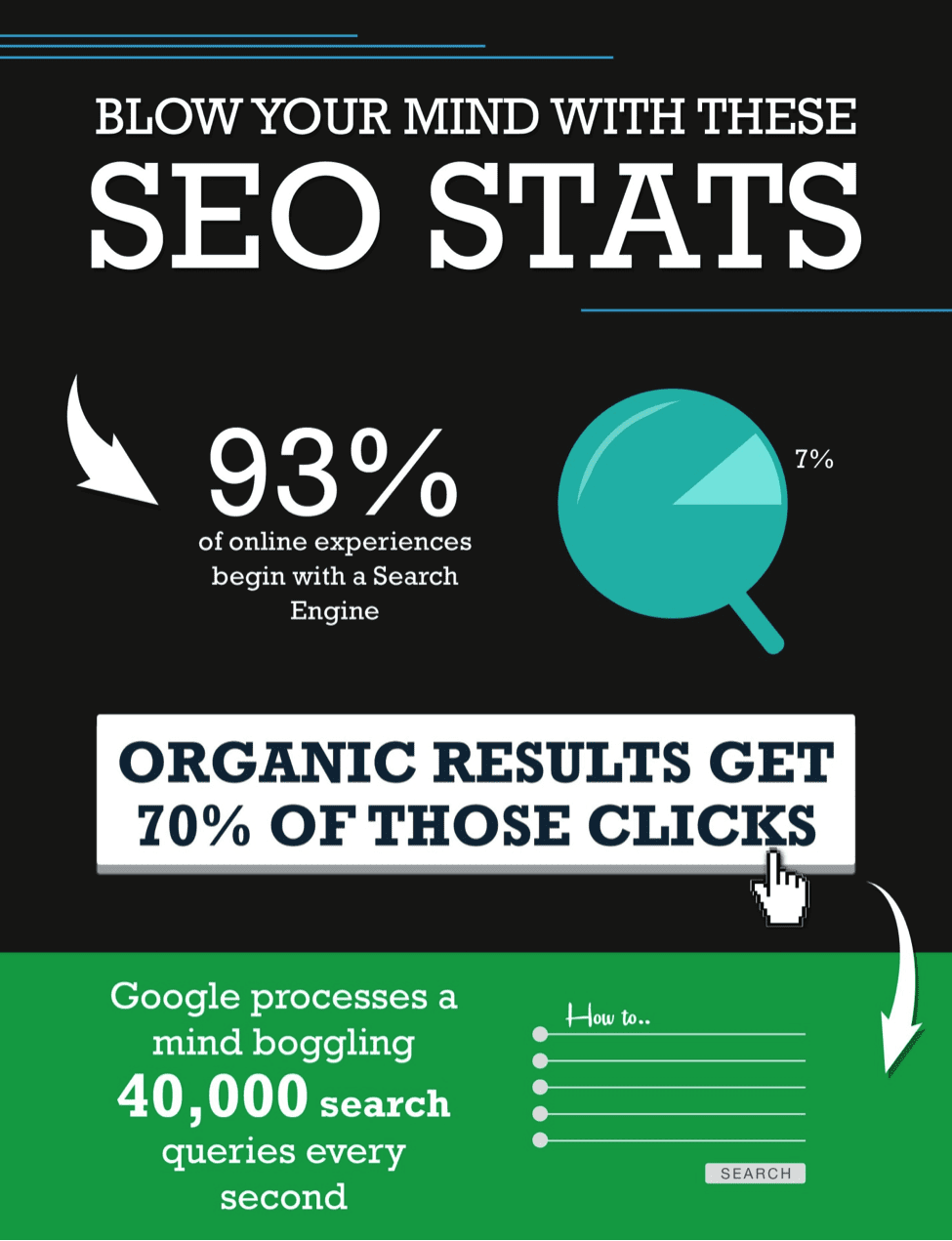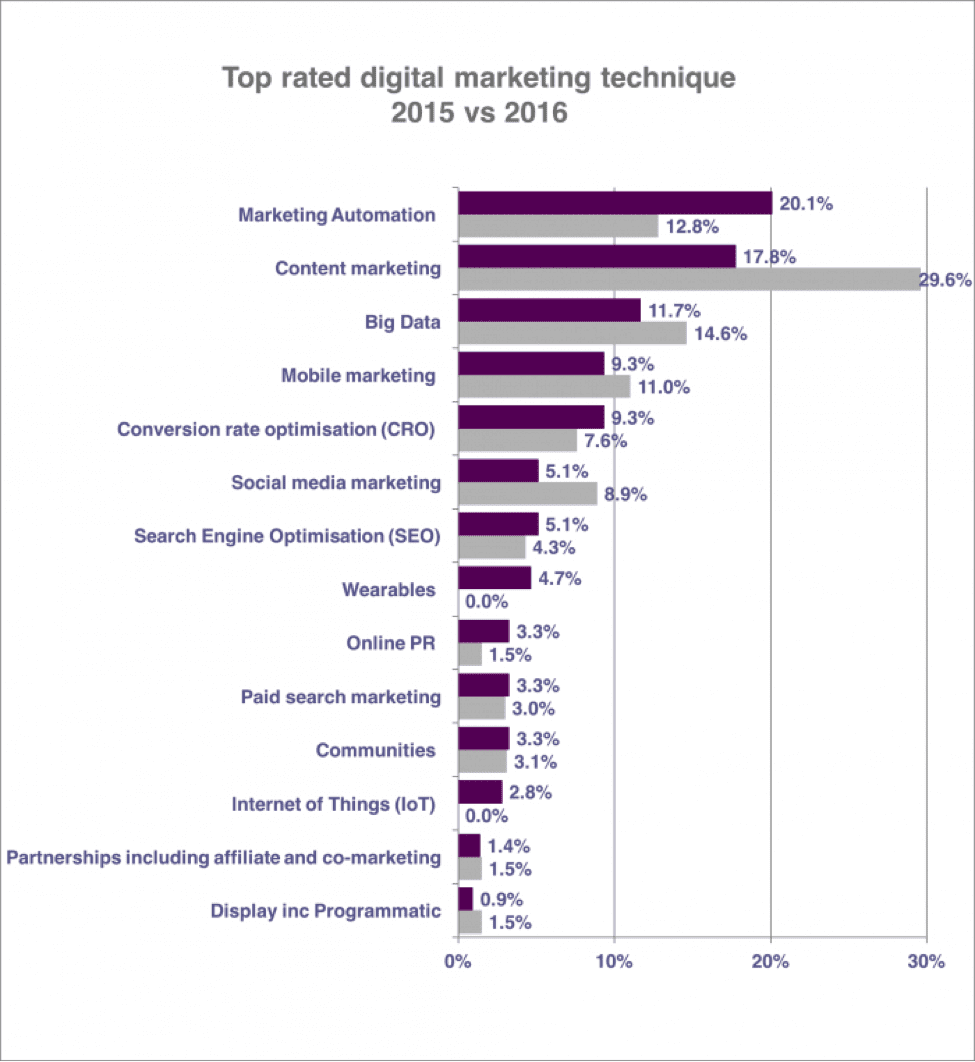The anatomy of a successful website in 2016 and beyond
Digital marketing is such a fluid industry that many changes have taken place this past year alone.
Consider:
There are probably more changes that went under the radar and developments that are about to take place soon in this field. This goes to show that digital marketing is an ever-evolving industry that requires marketers to stay abreast with the latest news to keep themselves informed about its best practices.
Throughout the years, there are digital marketing practices that stood the test of time and other upcoming trends that marketers need to capitalize on if they want their sites to remain competitive in the market.
Below are some of the tips and advice that you as a marketer need to follow to make the most out of the websites you are handling.
Reliable web hosting
An excellent website stands on solid ground, and web hosting offers such foundation where sites can stand on.
Not all web hosting services are the same. There are different factors to consider when choosing the right web hosting provider for you to deliver your site content to visitors.
Support
A hosting service should understand that a website that is down due to server issues means lost revenue. That is why they should answer your questions at the earliest and fastest time possible to prevent your website from bleeding further money.
Uptime
The hosting provider must guarantee the highest percentage of site availability for your users.
Page Load
As a user experience factor, average page load times is crucial. Studies show that 25% of visitors leave from a page that loads in more than four seconds.
Price
All the factors above is summed up by the price. Normally, the better the features, the more expensive the hosting service.
All these factors are tackled at HostingFacts, a site that contains objective web hosting reviews from different users. Every review for every hosting provider is given an aggregated score, making it much easier for you decide which hosting service to choose or move to soon.

HostingFacts ranks web hosting services based on these factors to come up with an aggregated and unbiased score for each of the services reviewed.
If you already have an established site that drives millions of traffic to your site, you may want a more comprehensive solution such as a dedicated web hosting. This prevents site downtime due to the massive amount of incoming visitors which can strain regular web hosting services.
CMS
Your content management system (CMS) plays a significant role in not only how your content is presented to your audience, but also how your access the dashboard of your site.
WordPress would appear to be the logical choice as your CMS. It has a vast array of responsive themes to choose from – perfect for viewing on desktop and any mobile device. Each theme has documentation that makes it easy for you to make the necessary edits to its appearance to achieve your desired look.
Below are some of the most popular themes that you ought to consider using as your WordPress theme:
- Genesis Framework – Developed by StudioPress, Genesis is a lightweight, SEO-friendly, mobile-responsive framework that lets you get the best out of your website. You can purchase download different themes from StudioPress to achieve the look and design you want for your site.
- Thesis 2.0 – This DIY Themes framework lets you customize your design layout without any coding and programming experience through the Boxes feature. You can also use predesigned themes or “skins” to improve your site appearance.
- Divi 2.0 – The only WordPress theme in this list, Divi 2.0 by Elegant Themes has a builder feature that lets you quickly drag and drop elements on any page of your site. You can choose predesigned templates so you can jumpstart your site development.
However, if you are not comfortable with using WordPress to run your website, there are other alternative CMS that you can use. Below some of the most popular choices:
- Squarespace – This compares favorably over WordPress with its drag-and-drop site builder, making it easier to make web pages on the fly. The only downside is how it compromises flexibility and customization over usability.
- Weebly – Another drag and drop site builder that is perfect for e-commerce sites. You can choose from different mobile responsive site designs that best fit your brand.
- com – If you want to focus on the bare essentials of your site, then this platform offers minimalist design to put your content in the forefront.

Above is a comparison chart of blogging and CMS platforms to choose from for building your website. Below each column is a score based on different criteria to help you determine the best platform for you.
Keep in mind that the most important thing when choosing your CMS is the ease of use for you. While WordPress may arguably be the most popular CMS in the market, it will not be of real use to you if you find it difficult to use. Therefore, it is smart to try out the different CMS first and consider all the factors involved in running an efficient website before making a decision.
Content strategy
Publishing your content is not as simple as clicking the "Publish" button. There's much guesswork that takes place before putting your content online for everybody to see. The process of determining the kind of content you want to feature online must be covered by your strategy.
Your content strategy must lay down the foundation of your online content and how they all tie together to the kind of business you want to showcase to your target audience. Some of the factors covered by content strategy, but are not limited to, includes:
Objectives
You need to define what your online business is all about and what you want to achieve with it with your intended audience. Do you want to turn visitors into loyal advocates of your sites or you want them to buy your products or services? The points you will mention here will give your business an identity that you should stick to when writing and developing your content.
Competitors
To understand where your website stands in your niche, you need to find your main competitors are analyzed their strengths and weaknesses. Emulate the tactics and strategies that play off their strengths and take advantage of things they are not good at.
Target audience
You must shape your buyer persona by determining their age, purchasing power, educational attainment, interests, and other factors. Developing this persona will help you create content that is geared to this particular audience to maximize conversion rate.
Channels
Will you rely on your website or blog for creating and publishing content? How about social media and other online communities? You need to find out the best channels where you can create content that observes your content strategy so you can extend your reach to your audience.
To develop a much more in-depth and comprehensive content strategy, I suggest hopping over to Chapter 1: Build a Strong Foundation at Quicksprout. While the chapter is part of building a content marketing strategy, which is different from a content strategy, it nonetheless touches upon the key points that you need to determine in forming a groundwork for your successful website.
Once you have the strategy in place, you will have a better understanding of how you want to approach creating, publishing, and promoting your content to the right people. By sticking to your strategy through the content you post online, you can show off the kind of website you have, which can help you turn visitors into loyal subscribers of your site, if not paying customers.
SEO
One of the key goals that you need to achieve with your site is driving as many visitors as possible. Generating a constant stream of website traffic helps you attract your audience and develop a readership, lead database, or customer base.
Search engine optimization (SEO) has proven time and again as one of the best and cost-efficient ways to draw more visitors to your site. By observing the best SEO practices to optimize your site with, you increase the chances of ranking high for your target keyword on search engines.

For beginners, SEO may be a lot to take in as it involves lots of technical processes to get to the top of Google search. However, you can, at least, familiarize with this concept by reading these resources:
- Search engine optimisation (SEO) at Smart Insights – Offers a holistic view of SEO and provides a better idea of how it works, whether with the help of an agency or doing it yourself. Also shows statistics and figures to help support the arguments about certain SEO points.
- The Beginners’ Guide to SEO at Moz – One of the first and best SEO resources that explain the entire process of SEO (from how a search engine operates to tracking measuring the success of your website) using visually appealing designs that laymen can easily understand.
- Link Building Tactics – The Complete List at Point Blank SEO – Arguably the most comprehensive list of link building tactics online. You can filter the tactics according to available time to execute, link value, and dependency on other sources.
Now that you have a better understanding of SEO and its inner workings, you can either hire an agency to do the dirty work for you or you can do it yourself. It is suggested that you hire someone who is willing to manage the SEO campaigns of your site if it is too big to manage for your good.
If that is the case, then it is best to read “Don’t Get Fooled: 17 Questions to Ask Before Hiring an SEO Company” at Quicksprout. Given the number of SEO agencies and companies promoting their services, the questions in the post should serve as your guide when choosing the best SEO service that fits your needs and wants.
If you feel like you are capable of taking up the SEO tasks by yourself, then you should use the best SEO tools that let you automate some of the more menial SEO tasks and analyze pages that need optimization. Below are some of the most recommended ones:
- Moz – One of the most popular SEO tools, Moz crawls your site for pages that need your attention from an SEO perspective. The software also lets you analyze and grade the pages in your need based on the keywords they are optimizing for. Aside from SEO, Moz Pro offers service to help optimize your content for engagement (Moz Content) and analyze your social media followers to create actionable items (Followerwonk).
- Ahrefs – Arguably the best link analysis tool in the market, Ahrefs has trillions of indexed pages online to provide you with a close approximation of link data for your site and competitors'. This tool is perfect if you want to mine for link building opportunities and track your current link profile.
- SEMrush – Since keyword research is the most important part before proceeding with your SEO campaigns, you need the best possible tool that will deliver keyword results for conducting competitor analysis and analysis on your site. SEMrush does exactly this, plus the ability to see pages of competitor sites that drive the most organic traffic.
Content marketing
Once you have established an SEO strategy (determining your target keywords in particular), you can start rolling out your content marketing plan.
The purpose of content marketing is to communicate to your target audience your brand story through the content you will develop and publish on your site in the hopes of engaging with them.

Content marketing was predicted to be 2016’s second best rated digital marketing technique at 17.8%. Although it was ranked much higher the previous year at 29.6%, it nonetheless proves that content marketing has proven to be a solid tactic to help raise your website performance.
Since you will have developed a content strategy as mentioned earlier, which deals with refining the message that you need to communicate with your content, your focus now with a content marketing strategy is to find the best ways on how to develop and promote the optimized content to your intended audience.
Here are points that you need to determine when forming your strategy for content marketing:
Content Types
Since blog posts are the most common type of content, you may want to consider using other types such infographics, ebooks, webinars, and podcasts to disseminate your message.
Using different content types, especially visual content, also aids in communicating your ideas to your audience much more effectively. Consider: colorful visual content like images and infographic increase the willingness of users to view and read them by 80%, among other compelling statistics.
Content development
Along with figuring out the content types you want to publish, you need to refine the topics that will be discussed on your content. Center your content around your chosen target keywords so you will have a clearer idea of what you want to communicate to your idea.
If you are struggling to come up with topics, you can refer to different content title generators to help you brainstorm for unique angles and click-worthy titles for your content. For those running a blog, blogger Kristi Hines published this fantastic post about coming up with blog ideas that you ought to read.
Editorial calendar
You need to come up with a schedule on when to publish your content on your site. It is best so schedule content for a quarter so you can scale the performance of each post based on the schedule of publication and the topics covered by each.
There is no one correct way on how you should schedule posts. Just make sure that you post on a regular and consistent basis so your audience can expect something from you in those times. You can download a free editorial calendar template to begin drafting your content schedule, or you can use a tool like CoSchedule so you can manage your calendar online with your content team.
Distribution channels
To maximize the impact of your post to your audience, you must find the best online channels where you can share your website content. Aside from social media, you need to consider other places where you can promote your website online (Facebook Groups, LinkedIn Groups, subreddits, and Q&A sites, to name a few).
To find the best channels for content promotion, they must be related to your site and have a substantial amount of moderately active members that you can consider your audience.
To make the effort put into content promotion much more fruitful, you must build relationships with people in your chosen channels and establish trust with them. By gaining their vote of confidence, you become a thought leader of the group with a voice valued by the community. As a result, you can easily influence members to visit your website and check your content.
For a better idea of how you can develop a content marketing strategy for your website, check out "Content Marketing Strategy: A Comprehensive Guide for Modern Marketers” at Hubspot. Aside from elaborating on the points above, you will also learn how to structure a group of people who will implement and track your strategy to maximize your website performance.
Analytics
Arguably the most crucial part of a successful website, analytics helps you track and measure website performance using different key metrics.
Scaling your marketing efforts is important because you can determine tactics and strategies that work and those that do not. You can then amplify and replicate the best tactics over time and disregard the ones that did not produce the desired results for your website.
Successful websites use different metrics to gauge their site performance, but you can start with these factors for starters:
Page views
This metric provides the number of views that your web pages have received over a period. You will see which among your pages are attracting the most visits from users and which ones that are not performing as well. You can then analyze the page and answer why it received the most traffic so you can replicate it in your next content.
Bounce rate
You can see how much engaged your visitors are with your site pages using this metric. The higher the percentage rate, the less successful your site pages are in engaging with users. Therefore, you need to find a way to lower your bounce rate of particular pages to maximize engagement, retention, and conversion.
Referrals
About your distribution channels, this metric will reveal to you how many visitors your site is receiving from different online sources. This is critical if you want to determine how your content marketing is faring or how effective your SEO campaign is based on the number of organic search traffic you have received.
Conversions
If you want to drive more conversions to your landing pages, whether it is getting more visitors to subscribe to your email list or retaining them for a certain period on a particular page, then you need to take a close look in this metric. Analytics tools will require you to set manually up your conversion goals. However, tracking and measuring how each of your pages performs based on your conversion rate is crucial to the success of your site.
A lot will point to Google Analytics as their tool to gauge website performance based on the amount of data it collects. While it is a great analytics tool, other tools can help you supplement and provide more insight into your marketing strategies. Below are tools you must consider along with Google Analytics.
Clicky - Known as a Google Analytics alternative, Clicky focuses on collecting more relevant data that tracks how your website performs and presents them in a clearer and less cluttered manner. This is perfect for website owners who want a more streamlined approach to their analytics campaign.
CrazyEgg - Part of measuring your conversion rate is determining which elements on your page receives the most clicks. CrazyEgg is a heat maps tool that provides such data. Upon receiving the information of pages from this tool, you can reshuffle the elements and place your links and CTA buttons to the parts where visitors click on the most.
SumoMe Content Analytics - This tool is part of the SumoMe suite that helps you supercharge your website performance. Content Analytics measures up to which point your page loses 50% of your visitors. Your objective now is to maximize visitor engagement with your content by increasing the chances of readers to browse down your content or place your calls to action on part of your page before most of your visitors leave.
To understand how website analytics work and how you can measure your website performance on your own, Smart Insights’ Web analytics strategy resource page should help you get started.
Based on the information presented above, there is simply so much that you have to put up in order to make your website succeed. However, there are no easy roads that lead to quick success. By following the guide above, you will be able to develop a strategy that will help you build a website from the ground up that will achieve long-term and sustainable success.
 Christopher Jan Benitez
Christopher Jan Benitez is a professional content marketer and writer. He has helped small businesses achieve their goals by implementing a strong content strategy that emphasised their unique selling points and promoting created content using effective online channels and methods, in particular social media marketing and search engine optimisation techniques.











